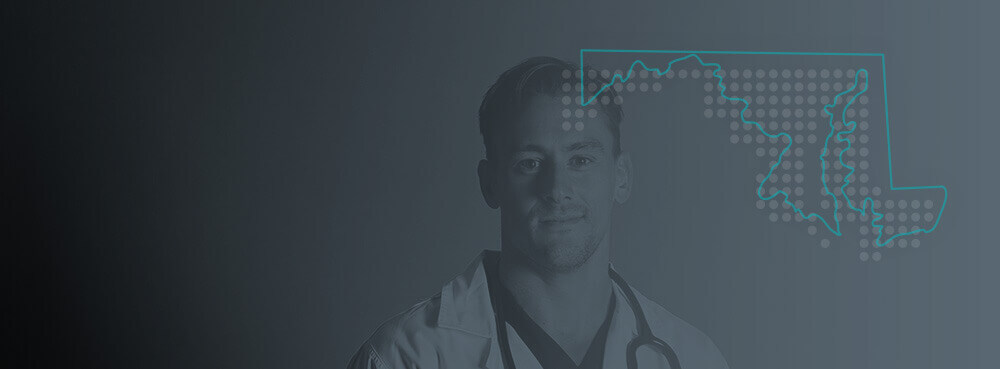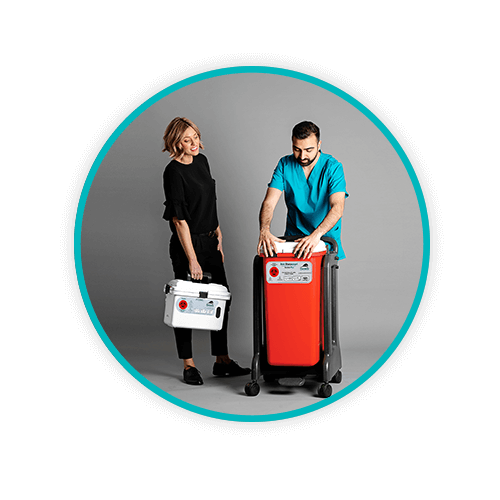Guide to Maryland Medical Waste Regulations

In discussing medical waste regulations of states throughout the US, Daniels Health has emphasized numerous times that understanding of definitions is important. Maryland medical waste regulations also contain terminology that might prompt confusion unless those terms are understood.
What are we talking about? In most cases, medical waste is either defined as hazardous/ infectious or non-hazardous/non-infectious. Other terms are also used in different states including biohazard waste, hazardous waste, and so forth. The state of Maryland adds another term into the mix: “special medical waste”. What exactly does that mean?
According to Maryland’s Department of Health, “special” medical waste is often referred to as hazardous or infectious medical waste. They go on to further define “special” medical waste as any type of waste that has or has the potential to be contaminated by an organism is capable of causing disease in healthy humans.
Maryland’s Department of Health and Mental Hygiene is the department with the responsibility for defining “special” (i.e. regulated) medical waste as well as standards and criteria through which a variety of medical waste treatment methods are considered and approved. They also determine whether certain types of waste treatments themselves create a regulated or non-regulated waste product.
Daniels Health has also emphasized on numerous occasions that state guidelines and regulations for healthcare waste management are often more strict than those of the federal government. As seen with Maryland, some comparisons differ, such as Maryland referencing its medical waste as “special medical waste”. That also means the state may deem solid wastes as well as “controlled” hazardous substances among this ‘special’ category.
The two primary regulatory agencies involved in healthcare waste management in Maryland include the Maryland Department of the Environment – Land Management Administration and Maryland’s Department of Health and Mental Hygiene.
Where to look for Maryland’s medical waste regulations
In addition to Maryland’s Department of Health and Mental Hygiene, resources for finding specific medical waste regulations, criteria for waste segregation, and medical waste disposal are under the purview of Maryland’s Department of Environment, which provides regulatory oversight for hazardous waste.
Another valuable resource for governing laws and regulations in the state of Maryland is found under their Code of Maryland Regulations (COMAR). Special medical waste is addressed under these regulations (COMAR 26.13.11 and COMAR 10.06.06).
Under these codes, a vast amount of information is available, including definitions, as well as specifics regarding:
- Special medical waste: COMAR 26.13.11.02 as well as COMAR 26.13.11.03
- Sharps: COMAR 26.13.11.02 – the code defines the definition of a “sharp”, specifying an object that:
“Is capable of cutting or penetrating skin or a packaging material and
i. Either is known, suspected, or reasonably anticipated to be contaminated with a human pathogen, blood, or other potentially infectious material or may become contaminated with the human pathogen through handling or during transportation;
(b)”sharp” includes needles, syringes with an attached needle or other sharp, scalpels, surgical instruments, broken glass, broken capillary tubes, broken rigid plastic, and exposed ends of dental wires…”
And the list goes on. Why did we mention this? Because it’s important to read the definitions and understand them in order to remain compliant, to understand the foundation of waste stream identification, waste segregation, and most importantly, terms that will ensure compliance with the handling, storage, and treatment of numerous types of medical waste.
Other topics found within Maryland’s special medical waste regulations in regard to handling include the topic of infectious waste, medical waste generators, and determinations for special medical waste. These codes also describe Maryland’s identification numbering system, certification, pre-transport and pre-treatment regulations, and more.
Based on definitions of Maryland’s environmental department, hazardous waste is defined as a substance that “must either have the potential to cause or contribute to an increase in mortality or serious illness, or threaten human health or the environment if mismanaged.” This department goes further in defining characteristics of hazardous waste that include:
- Ignitability
- Corrosivity (caustic or strong acids)
- Reactivity (such as gases that may release toxic waste into the environment when mixed with something else such as water, or something that might explode)
- Toxicity (any type of substance that has the potential or does release or leak toxins – but this department further defines such a scenario as ‘following testing simulations that mimic landfill conditions’)
As with other states, Maryland adopted the Hazardous Waste Electronic Manifest Establishment Act enacted by the federal government for launching a nationwide system of electronically tracking hazardous waste, known as e-manifest. These efforts, not only in Maryland, but in other states, enhance and modernize the “cradle-to-grave approach” recommended by the Environmental Protection Agency and regulations of the Resource Conservation and Recovery Act. The EPA publishes a fact sheet for generators regarding the e-manifest which is also important reading for any medical waste generator regardless of size.
The cradle-to-grave approach means that any medical waste generator is responsible for tracking medical waste from its point of origin until its final disposition or destruction. This is just as important for facilities that treat hazardous wastes on-site as well as those who rely on medical waste pickup companies. Even after medical waste is collected by the medical waste business for disposal, the medical waste generator is responsible for what happens to it even after it leaves your parking lot.
Getting Rid of Medical Waste Properly
In Maryland, a medical waste generator is not allowed to treat, to store, to dispose of, or to arrange for transportation of “special medical waste” without first obtaining a Maryland identification number.
The Department of the Environment for Maryland is also very clear about applications, permits, and instructions in regard to medical waste transportation. Their guidelines for transportation of special medical waste are important for any medical waste generator to become familiar with in order to maintain compliance. The document covers the type of containers, labeling instructions, and necessary shipping papers. Non-compliance can result in fines and penalties
Daniels Health is aware that reading through pages of regulations is not everyone’s favorite thing to do, but we also stress the importance for medical waste generators to do so. We ensure a cradle-to-grave approach to medical waste that maintains your compliance.
For more information on how Daniels Health can help your facility stay on top of ever-changing guidelines and regulations, contact us today. Alternatively find out more about our Indiana operations and service capabilities on our Maryland service page here.
Let's Talk!
Your time is valuable, and we don’t want to play hard to get. You can either phone us directly on the details listed on our contact page, or feel free to fill out this short form and one of our team members will get back to you as quickly as possible.
